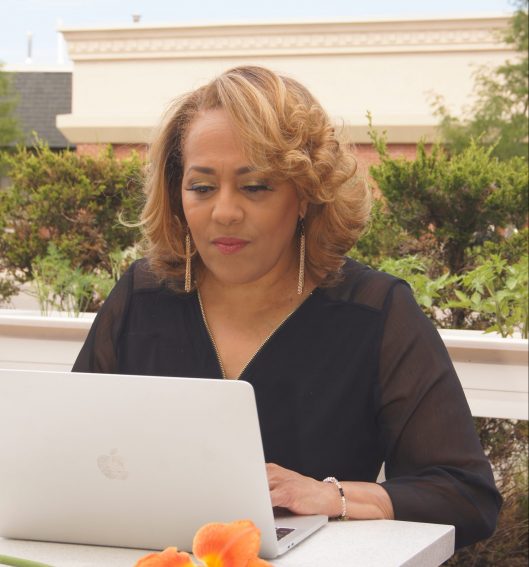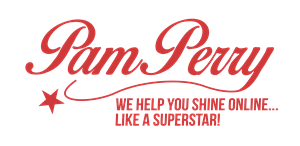
Since the pandemic, everyone is starting an online business. If you already had a business, you’ve got your ear to the ground to learn how to leverage your digital assets. The “sales funnel” is the key to a sustainable business.
But when it comes to actually building a funnel, things get a little murky. In the old days, we would share our offerings to a prospect, answer their objections and close the sale.
Since COVID-19, we are not networking and meeting potential clients in person. We have to meet prospects online. We are on social media more than ever. Folks are doing a million zoom meetings. Many business owners are doing “Lives” and a lot have turned to producing podcasts.
Not techy? Well, now you gotta be – but it’s not hard. You just have to talk to your potential customers via a webinar: which is essentially your sales call – just online.

What’s working right now when it comes to making sales? How can you stand out from the crowd?
Step 1: Understanding the Anatomy of a Product Funnel
Before you can really dig in and build a rocking sales funnel, you need to understand what’s truly involved. Don’t worry—that’s easier than it sounds.
At a minimum, a basic sales funnel looks something like this:
Free Content
-
-
- Blog posts & guest posts
- Social media updates
- Youtube videos
- Press releases
-
Opt-In Offers
-
-
- eBooks
- Short Reports
- Webinars
- Q&A Calls
- eBooks
- Reports
- Video Training
-
Low Cost Products
-
-
- (Something between $17 to $97 – could include books, audio programs)
-
High-Cost
•Multi-module courses
•Group coaching
You can see that there is a clearly defined flow from one step to the next. Your goal as a business owner is to move as many clients through your funnel as you can, and you do that by making the process smooth, and by creating absolute “no brainer” offers at each step.
Here’s a simple 3-step process for making sure your free content is working for you:
Step 1: Be helpful.
Step 2: Be authentic.
Step 3: Tell them what’s next.
The next time you sit down to write a blog post or email, or to script a new video or podcast, use this simple worksheet to ensure you’ve covered all three steps. Remember to get them to sign up for your webinar….so call it “masterclass” – but really it’s a webinar. Stay honest. 🙂
Step 2: Creating a Killer Webinar
By far the most effective way to both show off your skills and build that all- important “know, like and trust” factor is by hosting a free webinar. Not only that, but joint venture partners will jump at the chance to “share the stage” with you for an hour, while introducing you and your offer to a whole new audience.
The best webinars seamlessly combine 3 critical elements:
- Who you are—this is your chance to share the relevant aspects of your story.
- What you know—sharing real, actionable information is the quickest way to establish your expertise.
- Your offer—this is the answer to the question, “What’s next?”
Sounds simple, doesn’t it? Well, in reality, it is. It just takes practice – and if you need to, hire a coach.
Step 3: Plan Your Webinar
You’ve already written out your story, so now is the time to pull the most relevant information and script your webinar introduction. Ideally, you’ll want to keep your introduction to no more than 10 minutes (less if you can) so aim for 1500 words or so.
Your Introduction
Next, script your actual training. Plan to cover 3 – 5 main points. Keep in mind that you want to give your listeners actual steps they can follow, so you may want to think in terms of “3 ways to increase your Twitter followers” or “5 steps to financial freedom.” Make each step or concept a discreet, actionable item.
The training portion of your webinar should be approximately 30 minutes, so aim for 1500 words per tip, if you’re using the 3-tips model.
Your Training Script
Arguably the most important aspect of your webinar, your offer should build on the training by providing a way for listeners to learn more, and to really put your ideas to work.
Your offer should include details about your paid program, answers to the most common objections, and why your ideal client needs to buy. Keep your ideal client avatar—and the language she’s most likely to use—in mind when writing this and all the other elements of your webinar.
Aim for 10 to 15 minutes of webinar time, or 1500 to 2000 words.
Once you’ve perfected the strategy, it’s easy to build a systematized approach that will make growing your business nearly effortless.
And remember to incorporate automation where you can, such as using your autoresponder system to move people from one funnel to the next based on their purchases or behavior (such as clicking a link). Making the most of the tools available to you will make building your funnels easier, and allow you to create more passive income streams in the future.
